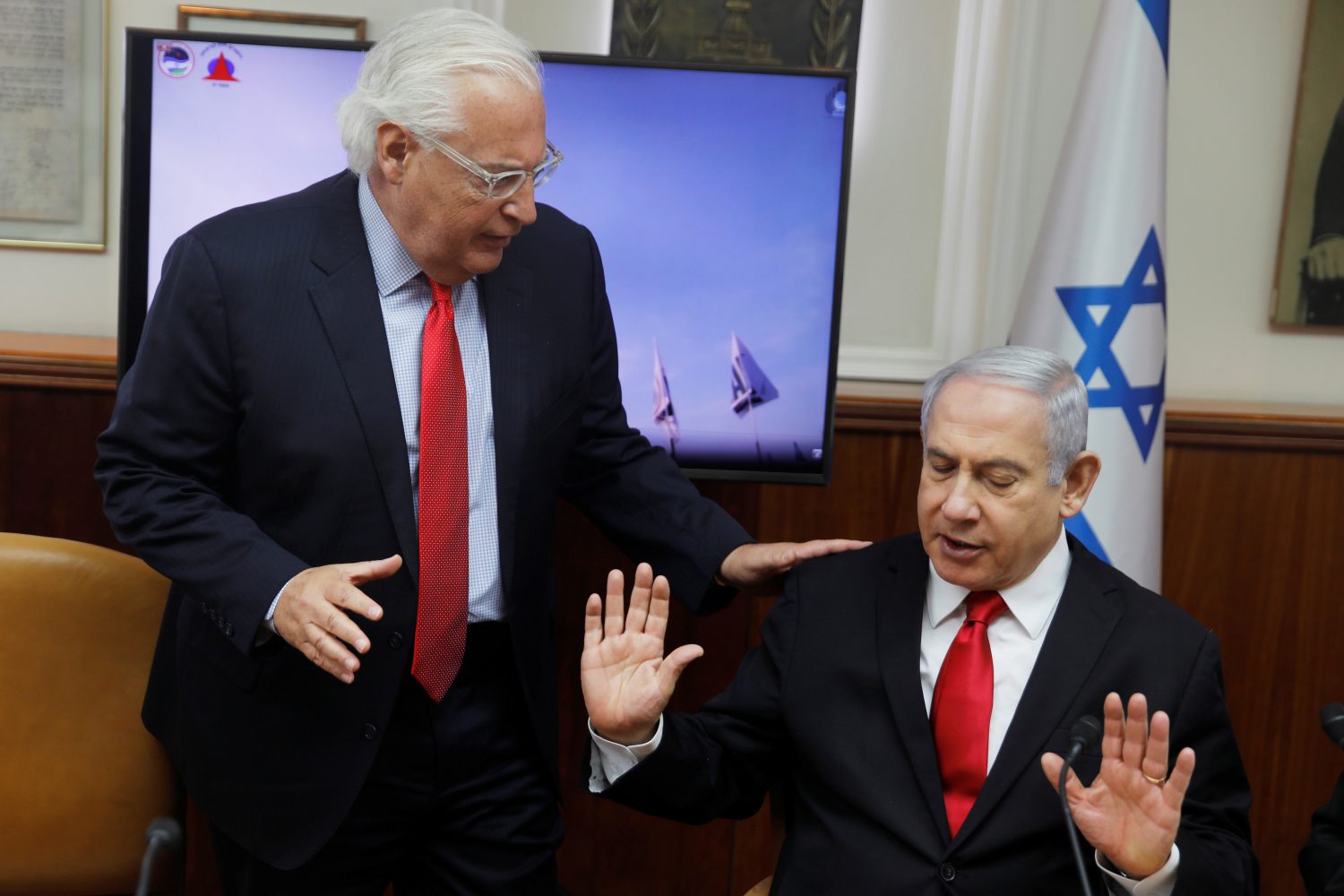
By Dan Williams
JERUSALEM (Reuters) – Israel’s U.S.-backed Arrow-3 ballistic missile shield has passed a series of live interception tests over Alaska, Prime Minister Benjamin Netanyahu said on Sunday, casting the achievement as a warning to Iran.
Jointly manufactured by U.S. firm Boeing Co, Arrow-3 is billed as capable of shooting down incoming missiles in space, an altitude that would destroy any non-conventional warheads safely. It passed its first full interception test over the Mediterranean Sea in 2015 and was deployed in Israel in 2017.

Israeli Prime Minister Benjamin Netanyahu and U.S. Ambassador to Israel David Friedman talk after watching a video of Israel’s U.S.-backed Arrow-3 ballistic missile shield performing a series of live interception tests over Alaska, U.S., during a cabinet meeting in Jerusalem July 28 2019. Menahem Kahana/Pool via REUTERS
“The performance was perfect – every hit a bull’s eye,” Netanyahu, who doubles as defense minister, said in a statement announcing the three secret tests.
Israel views the Arrow-3 as a bulwark against the ballistic missiles fielded by Iran and Syria.
Iran has been locked in a spiraling confrontation with the United States over its nuclear program and missile projects.
Washington said last week that Iran appeared to have tested a medium-range ballistic missile that flew about 1,000 km (620 miles). Tehran said such tests were for defensive needs.
“Today Israel has the capabilities to act against ballistic missiles launched at us from Iran and from anywhere else,” Netanyahu said on Sunday. “All our foes should know that we can best them, both defensively and offensively.”
Arrow-3’s Alaska trials had been expected last year but were postponed, following earlier difficulties in testing the system.
Its first full trial, scheduled in 2014, was aborted due to what designers said was a faulty flight by the target missile. Follow-up Israeli tests in late 2017 and early 2018 were also called off at short notice due to technical problems.
The system’s success in Alaska was held up by both Israel and the United States as a sign of the strength of their alliance.
The U.S. ambassador to Israel, David Friedman, attended Sunday’s meeting of Netanyahu’s cabinet, where he and the ministers watched a video of an Alaska missile interception.
Israel’s Ministry of Defense said that, as part of the Alaska tests, Arrow-3 was successfully synched up with the AN-TPY2 radar – also known as X-band – which provides the United States with extensive global coverage. Israel hosts an X-band battery.
“We are committed to assisting the government of Israel in upgrading its national missile defence capability to defend the state of Israel and deployed U.S. forces from emerging threats,” Vice Admiral John Hill, director of the Pentagon’s Missile Defence Agency, said in a statement.
Arrow-3 and an earlier generation system, Arrow-2, serve as the top tier of an integrated Israeli shield built up with U.S. backing to withstand various potential missile or rocket salvoes. The bottom tier is the short-range Iron Dome interceptor while David’s Sling shoots down mid-range missiles.
Also involved in Arrow’s manufacturing are Israel Aerospace Industries, Rafael Advanced Defense Systems and the Elisra Company, a subsidiary of Elbit Systems Ltd.
(Writing by Dan Williams; Editing by Susan Fenton)



